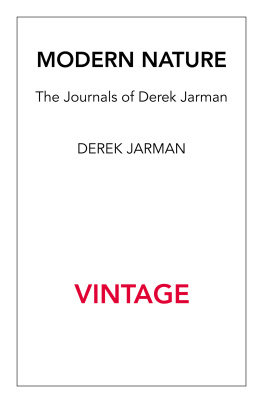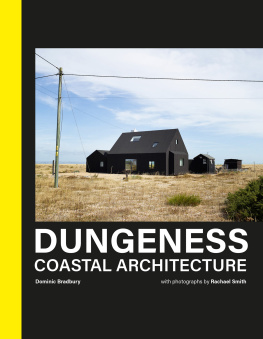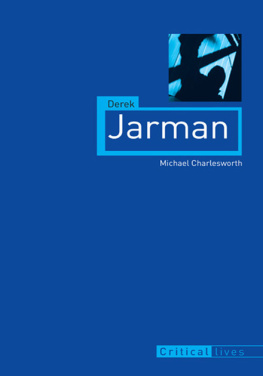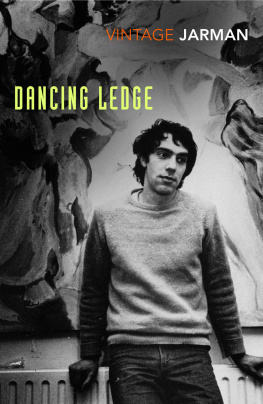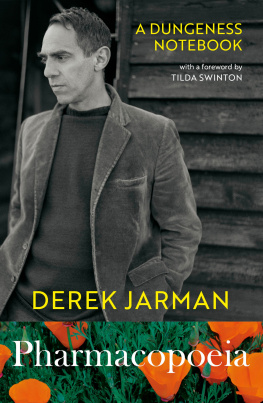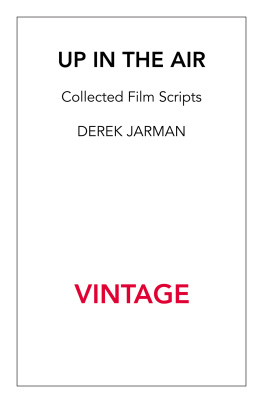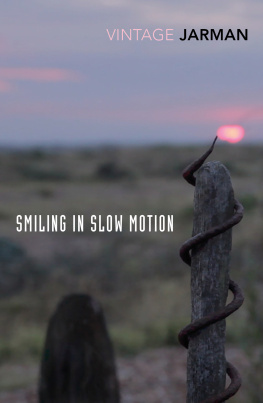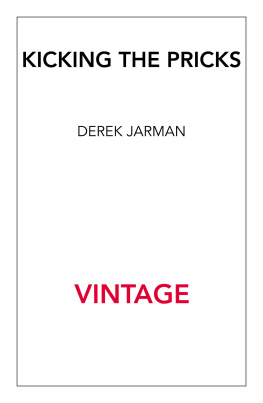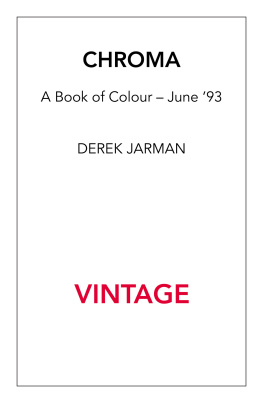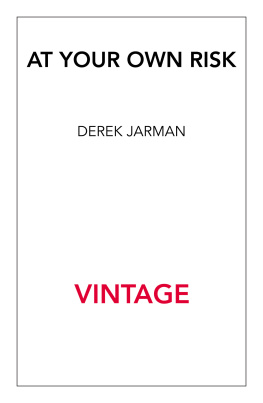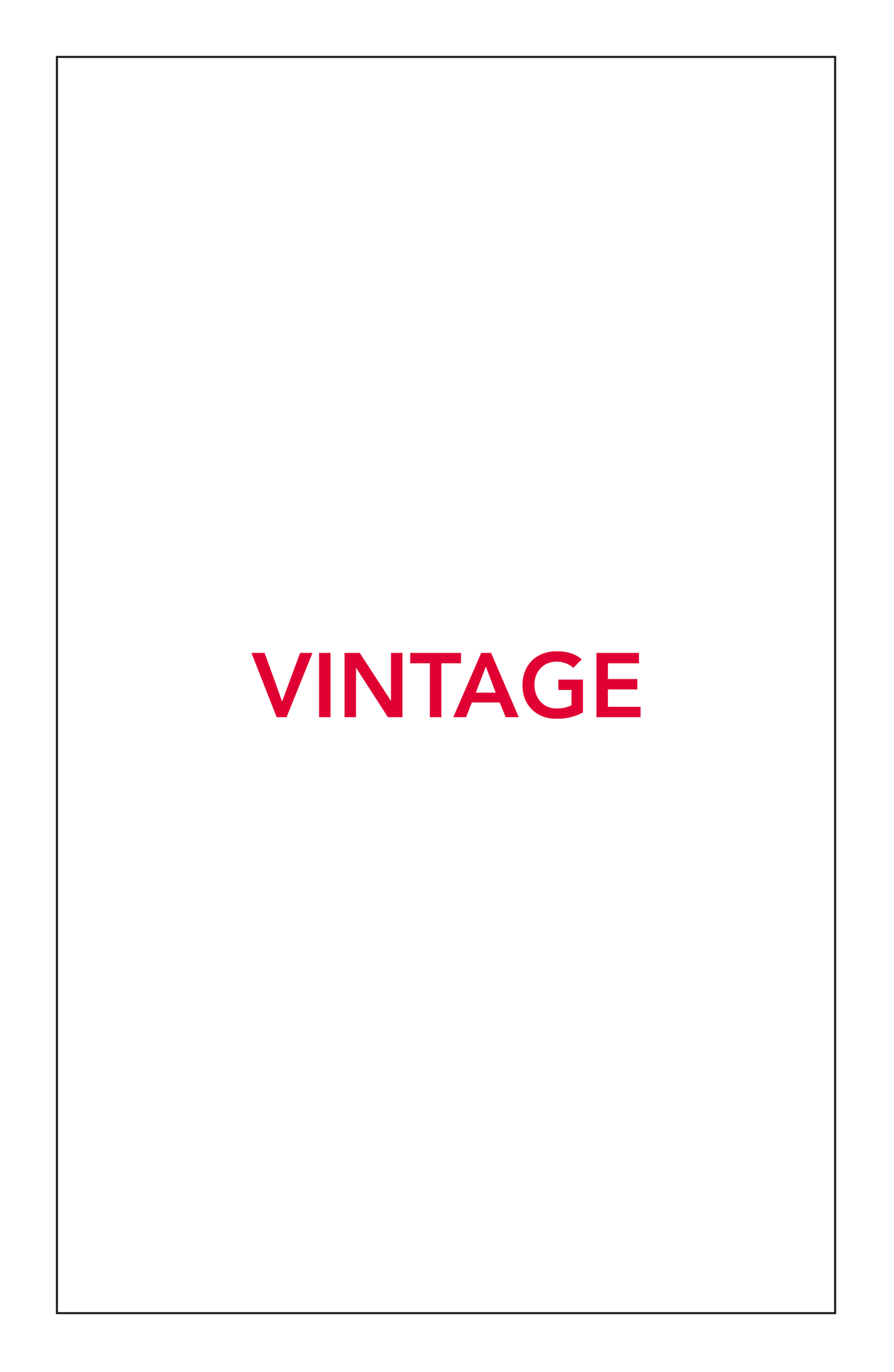@vintagebooks
penguin.co.uk/vintage
Contents
Derek Jarman
M ODERN N ATURE
The Journals of Derek Jarman
This ebook is copyright material and must not be copied, reproduced, transferred, distributed, leased, licensed or publicly performed or used in any way except as specifically permitted in writing by the publishers, as allowed under the terms and conditions under which it was purchased or as strictly permitted by applicable copyright law. Any unauthorized distribution or use of this text may be a direct infringement of the authors and publishers rights and those responsible may be liable in law accordingly.
Epub ISBN: 9781473559011
Version 1.0
1 3 5 7 9 10 8 6 4 2
VINTAGE
20 Vauxhall Bridge Road,
London SW1V 2SA
Vintage is part of the Penguin Random House group of companies whose addresses can be found at global.penguinrandomhouse.com.
Copyright Derek Jarman 1991
Derek Jarman has asserted his right to be identified as the author of this Work in accordance with the Copyright, Designs and Patents Act 1988
First published in Vintage in 1992
First published by Century in 1991
penguin.co.uk/vintage
A CIP catalogue record for this book is available from the British Library
CONTENTS
ABOUT THE AUTHOR
Derek Jarmans creativity spanned decades and genres painter, theatre designer, director, film maker, writer and gardener.
From his first one-man show at the Lisson Gallery in 1969; set designs and costumes for the theatre and ballet (Jazz Calendar with Frederick Ashton at Covent Garden, Don Giovanni with John Gielgud at the London Coliseum, The Rakes Progress with Ken Russell at Teatro Communale, Florence); production design for Ken Russells films The Devils and Savage Messiah; through his own films in super-8 before working on features: Sebastine (1976), Jubilee (1978), The Tempest (1979), The Angelic Conversation (1985), Caravaggio (1986), The Last of England (1987), War Requiem (1989), The Garden (1990), Edward II (1991), Wittgenstein (1993), and Blue (1993); to directing pop-videos and live performances for Pet Shop Boys and Suede.
His paintings for which he was a Turner Prize nominee in 1986 have been exhibited world-wide.
His garden surrounding the fishermans cottage in Dungeness where he spent the last years of his life remains a site of awe and pilgrimage to fans and newcomers to Jarmans singular vision.
His publications include: Dancing Ledge (1984), Kicking the Pricks (1987), Modern Nature (1991), At Your Own Risk (1992), Chroma (1994), Derek Jarmans Garden (1995).
1989
JANUARY
Sunday 1
Prospect Cottage, its timbers black with pitch, stands on the shingle at Dungeness. Built eighty years ago at the seas edge one stormy night many years ago waves roared up to the front door threatening to swallow it Now the sea has retreated leaving bands of shingle. You can see these clearly from the air; they fan out from the lighthouse at the tip of the Ness like contours on a map.
Prospect faces the rising sun across a road sparkling silver with sea mist. One small clump of dark green broom breaks through the flat ochre shingle. Beyond, at the seas edge, are silhouetted a jumble of huts and fishing boats, and a brick kutch, long abandoned, which has sunk like a pillbox at a crazy angle; in it, many years ago, the fishermens nets were boiled in amber preservative.
There are no walls or fences. My gardens boundaries are the horizon. In this desolate landscape the silence is only broken by the wind, and the gulls squabbling round the fishermen bringing in the afternoon catch.
There is more sunlight here than anywhere in Britain; this and the constant wind turn the shingle into a stony desert where only the toughest grasses take a hold paving the way for sage-green sea kale, blue bugloss, red poppy, yellow sedum.
The shingle is home to larks. In the spring Ive counted as many as a dozen singing high above, lost in a blue sky. Flocks of greenfinches wheel past in spirals, caught in a scurrying breeze. At low tide the sea rolls back to reveal a wide sandbank, on which seabirds vanish like quicksilver as they fly close to the ground. Gulls feed alongside fishermen digging lug. When a winter storm blows up, cormorants skim the waves that roar along the Ness throwing stones pell-mell along the steep bank.
The view from my kitchen at the back of the house is bounded to the left by the old Dungeness lighthouse, and the iron grey bulk of the nuclear reactor in front of which dark green broom and gorse, bright with yellow flowers, have formed little islands in the shingle, ending in a scrubby copse of sallow and ash dwarfed and blasted by the gales.
In the middle of the copse is a barren pear tree that has struggled for a century to reach ten feet; underneath this a carpet of violets. Gnarled dog roses guard this secret spot where on a calm summer day meadow browns and blues congregate in their hundreds, floating past the spires of nettles thick with black tortoiseshell caterpillars.
High above a lone hawk hovers, while far away on the blue horizon the tall medieval tower of Lydd church, the cathedral of the marshes, comes and goes in a heat haze.
~
A sky blue borage plant in flower, one of a clump that self-seeded by the back door. It droops in the early morning frost but recovers quickly: I borage bring courage.
Thursday 5
The first crocus is out in the front garden, one of the corms I planted last year in little pockets of peat in the shingle. It struggled to open all morning, finally drawing the sunlight to itself as the sun disappeared behind the house.
Monday 9
Planted roses: Rugosa double de Coubert Harrisonii, Rosa mundi a selection of old roses from Rassells in Earls Court. By the time I have finished there will be over thirty scattered in clumps through the garden, disrupting its wildness as little as possible.
I arrived at dusk in the nursery set in its little square under the plane trees its a romantic place. Walking around in the deepening gloom through the rows of plants you are drawn into dreams of long summer days, looking at the ageing photos above each plant.

